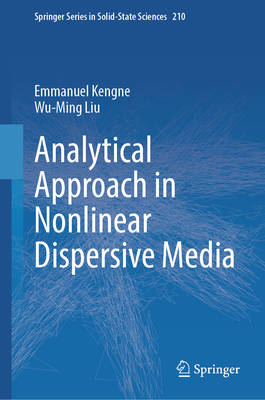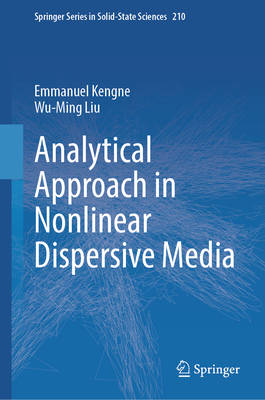
- Afhalen na 1 uur in een winkel met voorraad
- Gratis thuislevering in België vanaf € 30
- Ruim aanbod met 7 miljoen producten
- Afhalen na 1 uur in een winkel met voorraad
- Gratis thuislevering in België vanaf € 30
- Ruim aanbod met 7 miljoen producten
Zoeken
€ 335,95
+ 671 punten
Omschrijving
This book presents an analytical approach to treating several topics of current interest in the field of nonlinear partial differential equations and their applications to electrical and communications engineering, the physics of nonlinear dispersive media, as well as the nonlinear wave interactions. It treats analytically Ginzburg-Landau and wave equations such as higher-order nonlinear Schrodinger equations with/without dissipative terms, Gross-Pitaevskii equations with complicated potential terms, and cubic-quintic Ginzburg-Landau equations. For solving analytically various problems of mathematical physics in nonlinear dispersive media, the book explanatorily and carefully applies several powerful methods drawn from recent leading research articles. Special attentions are paid to the modulational instability phenomenon and baseband modulational instability phenomenon in nonlinear dispersive media. The theoretical results of this book are supplemented by numerical calculations and graphical illustrations. This book is intended for scientific researchers working in the field of nonlinear waves; it will be particularly useful for applied mathematicians, theoretical physicists, as well as electrical and communications engineers.
Specificaties
Betrokkenen
- Auteur(s):
- Uitgeverij:
Inhoud
- Aantal bladzijden:
- 746
- Taal:
- Engels
- Reeks:
- Reeksnummer:
- nr. 210
Eigenschappen
- Productcode (EAN):
- 9789819687169
- Verschijningsdatum:
- 1/09/2025
- Uitvoering:
- Hardcover
- Formaat:
- Genaaid
- Afmetingen:
- 155 mm x 235 mm

Alleen bij Standaard Boekhandel
+ 671 punten op je klantenkaart van Standaard Boekhandel
Beoordelingen
We publiceren alleen reviews die voldoen aan de voorwaarden voor reviews. Bekijk onze voorwaarden voor reviews.











